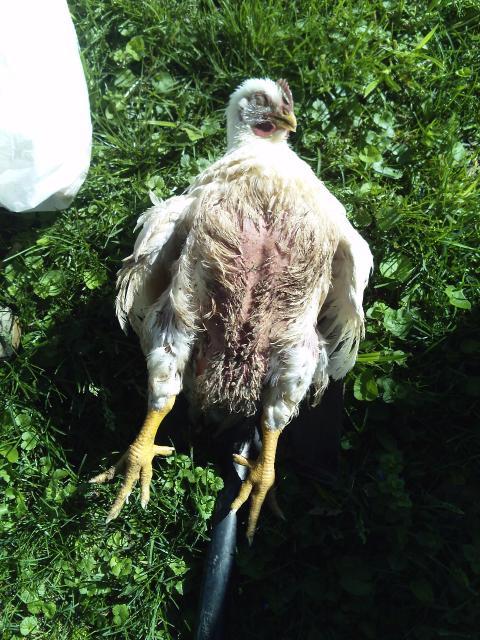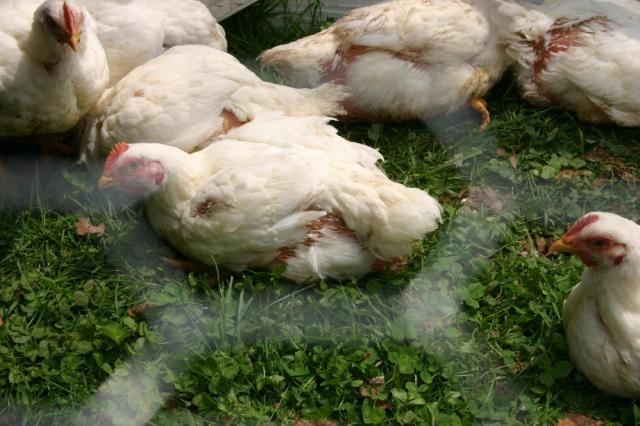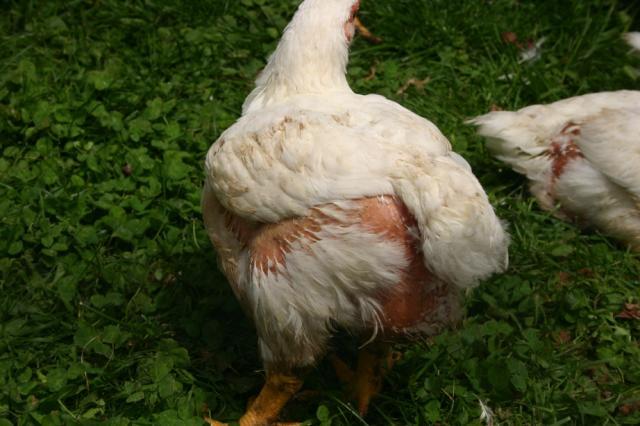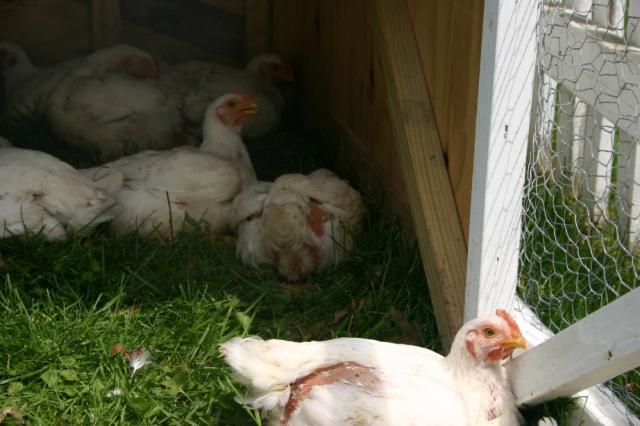- Apr 20, 2011
- 9
- 0
- 7
I originally posted this in the disease section a week ago and didn't get any replies until today, when someone suggested I post it here, too. THe birds are now almost 7 weeks old.
Original post:
Original post:
I'm new to the world of chickens, so any help is tremendously appreciated.
I have a batch of cornish cross broilers, about 6 weeks old, with lots of ugly looking broken and missing feathers. It started in the brooder, as the chicks grew (quickly), they spent most of the lying time on their bellies. Their bellies began to look dirty and matted and started looking like they were losing the fuzz there, which wasn't really being replaces by feathers. Using hardwood shavings, I began giving them more frequent and deeper fresh bedding. No change. But never having raised chicks, I thought maybe it was normal.
When they moved outside into the tractor, the problem didn't improve. Now it looks considerably worse. Their bellies are covered with broken feathers. All around their vents and under their wings, it looks the same: missing and broken feathers.
I can't see any mites on the birds. They scratch and pick at themselves, but don't seem to peck at one another (at least, not while I'm looking). I have one runt who got injured from moving the tractor, and he never really recovered. A few days ago, I found one of the birds dead and belly-up. At first, I suspected waterbelly, so I cut him open and he had some (1/4 cup?) yellowish fluid in his belly.
Here are some pictures from today.
Er, new members can't post pictures. I can email them to you or maybe post them elsewhere...
Thanks in advance for your help.
-Jeff
Next:
I have a batch of cornish cross broilers, about 6 weeks old, with lots of ugly looking broken and missing feathers. It started in the brooder, as the chicks grew (quickly), they spent most of the lying time on their bellies. Their bellies began to look dirty and matted and started looking like they were losing the fuzz there, which wasn't really being replaces by feathers. Using hardwood shavings, I began giving them more frequent and deeper fresh bedding. No change. But never having raised chicks, I thought maybe it was normal.
When they moved outside into the tractor, the problem didn't improve. Now it looks considerably worse. Their bellies are covered with broken feathers. All around their vents and under their wings, it looks the same: missing and broken feathers.
I can't see any mites on the birds. They scratch and pick at themselves, but don't seem to peck at one another (at least, not while I'm looking). I have one runt who got injured from moving the tractor, and he never really recovered. A few days ago, I found one of the birds dead and belly-up. At first, I suspected waterbelly, so I cut him open and he had some (1/4 cup?) yellowish fluid in his belly.
Here are some pictures from today.
Er, new members can't post pictures. I can email them to you or maybe post them elsewhere...
Thanks in advance for your help.
-Jeff
Next:
Any help?
An update: the guy from the hatchery says they look like normal 6-week-old broilers.
I'll try to get a picture of their bald bellies...
Today:
An update: the guy from the hatchery says they look like normal 6-week-old broilers.
I'll try to get a picture of their bald bellies...
Today:
I lost 2 more chickens overnight. The local vet said they don't really deal with birds, but would do a skin scrape if trying some Eprinex didn't solve the problem.
Will mites kill a bird? Is it buffalo gnat season already? I can't figure out what's getting these birds. The weather's been back and forth: hot and cold, wet and dry, with not much moderation between extremes.
Here's a pic of a belly (on a dead bird).
Finally, pictures:







Thanks in advance for the help. Sorry I'm such a noob...
-Jeff
Will mites kill a bird? Is it buffalo gnat season already? I can't figure out what's getting these birds. The weather's been back and forth: hot and cold, wet and dry, with not much moderation between extremes.
Here's a pic of a belly (on a dead bird).
Finally, pictures:







Thanks in advance for the help. Sorry I'm such a noob...
-Jeff


